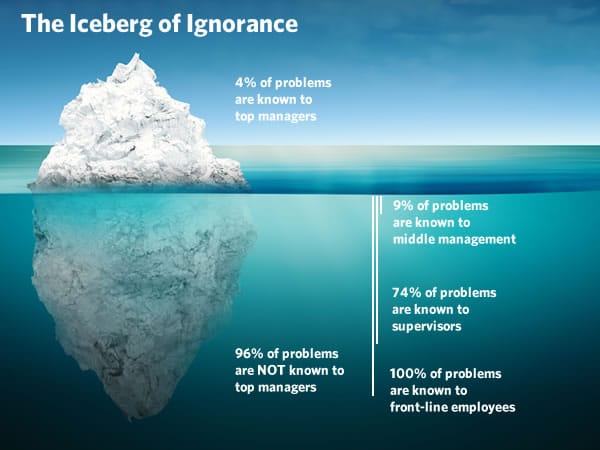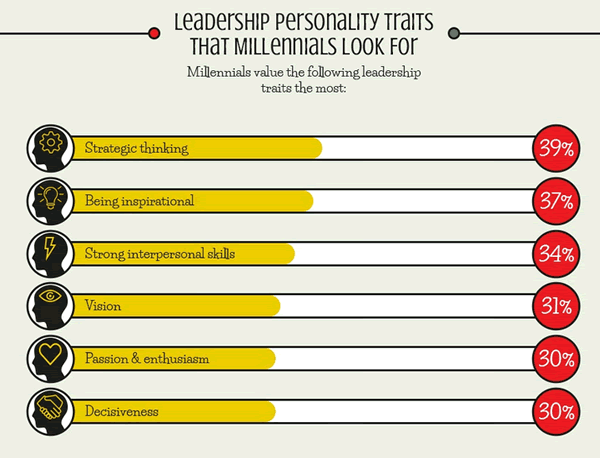
There is ample research on the reasons why digital transformation initiatives fail. We’ll mention one piece of research below.
However, based upon experience and many discussions over the past few years, here is a key reason why transformation fails: a lack of communication and involvement of people who matter far more than assumed and who are all too often overlooked.
It happens in transformations on the level of a business function, processes, an overall business model and most certainly societal evolutions. Making sure you have the (voice of) the right people is key in any digital transformation strategy.
Overlooking internal customers
We could also call it a lack of leadership but then in a non-traditional sense: the ability to ‘lead’ or, better, create a common purpose with a clear buy-in and involvement of all stakeholders, not just buy-in of leadership itself.
Most companies do realize that there often is a link between customer-centricity and customer experience on one hand and digital transformation on the other.
Fundamental change rarely happens with true involvement of employees and all stakeholders.
However, when you start looking at the top-down dictates that we see a lot and the lack of involving, let alone informing and guiding ‘internal customers’, that realization seems to dissapear.
We mentioned before how many customer-facing employees feel that leadership doesn’t really care about them. In transformative projects, employees and other critical stakeholders are often left out far too much as well, amidst uncertainties, leadership changes, a lack of basic involvement and uni-directional “internal” communication and management patterns.
You probably heard about the so-called Iceberg of Ignorance concept, depicted below. Never mind the percentages but we do know there is a cost in not being close enough to those front-line employees who in the end need to make transformations and your customer-centric initiatives happen. And it’s exactly there – and thus close to the customer – that we need to be in digital transformation.

Digital transformation and globalization: leaders need to communicate better
As said this ignoring of people and stakeholders also exists on other levels, including the societal one. Here is an example. If the reality is one of globalization and digitalization then why is the current political climate in many countries one of a return to nationalist reflexes, against globalization and changes as they do happen anyway?
Part of the answer lies in the lack of communication regarding societal evolutions by politicians or a preference to look away from global evolutions. Instead we see a rise of disconnects between governments and politicians, not in the ‘digital’ sense of digital transformation but in the ‘change’ sense.
Too many politicians (ab)use the simple approach of either 1) dictating new rules to adopt and adapt, without truly listening to and involving all stakeholders (in this case citizens) or 2) benefiting from the fact many citizens feel left out or are misinformed for personal political gain and ever more votes. It’s easier to be popular than to be realistic, open, involving and decisive, even if that means being less popular. It’s easier to take decisions in ivory towers without genuine involvement and communication.
Obviously one can also debate the benefits and consequences of globalization as such, as clearly not all citizens are on board (the majority being older generations and ‘lower’ education/class) but that is an entirely different discussion and choice to make as a country or group of people in a world that is de facto changing.
Get closer to your workers and to what drives people
In many organizations management pushes the digital transformation agenda top down and communicates after the facts too. I am sure you heard the term ‘ivory tower’ in a business context as well.
Knowing that in some companies, where transformation is urgent, leaders often come and go, confusion and uncertainty reign even more and the need to clearly involve workers, communicate openly and pay attention to the emotional dimension is high. An emotional dimension that often remains unseen, just like that big underwater part of each iceberg. The problem is that, although digital transformation can bring short-term gains, it is a mid- to long-term given. With each change of leadership you get a different view on how to realize the goals of the board because there is no one-size-fits-all solution and, contrary to popular belief, business management is not a science.
Put 5 different CEOs in front of the exact same challenge and you’ll have 5 different approaches, views and teams of trusted experts. Additional challenges: boards are also far from employees and don’t always get their transformation priorities right with too much focus on replacing (or upgrading) legacy IT, changing processes, saving costs and the likes. In the end people emotionally disconnect if that is how leadership sees change.
Even if leadership remains relatively stable it’s rare – and we are mainly talking larger organizations – that fundamental change happens with true involvement of employees and all stakeholders (who feel left out and are asked to be more agile or productive to execute upon the “big” top-down plan without having been heard) and with the proper attention for their needs and views as they need to go through these transformations with change management often being an afterthought or not a thought at all.
Forget a digital culture – start with ‘true’ communication
Change management is often an afterthought or not a thought at all.
Obviously this is not the case for all larger organizations but I’m pretty sure you recognize one or two situations. We know that digital transformations don’t happen without this attention for and involvement of employees and other stakeholders in a way that meets their individuality. However, in virtually everything you read regarding leadership and digital transformation it’s about generic processes, digital skills and a digital culture, to name a few.
The essence of paying attention to workers and teams that often know the challenges better than the C-suite as they live them each day, as well as the essence of what concerns people and drives them to change and collaborate is all too often missing.
In a sense it’s an ironic situation: while the regularly cited main reason for digital transformation is to be more customer-centric, customers in the broadest sense (from real customers and other stakeholders to the internal customers – employees – that make or break your business, regardless of your big imposed plan) are often overlooked. In business. And in politics.
Here is a quote from eWeek that reports on the research mentioned before: “The survey indicated that the main obstacles for businesses seeking rapid digital transformation relate to company culture, organizational complexity and the lack of processes that enable employees to engage, collaborate and innovate”.
Cultural change: start with individuals
Truisms. However, involving your workforce and truly listening precedes processes and leadership as an inclusive form of listening and involving in an adapted way, communicating openly and not imposing the big plan just like that precedes enablement.
The rather vague notion of cultural change is a mix of components where it is not about nurturing a state of constant change, pushing digital processes or just enablement and skillsets but about the ability to understand people and teams, involve them and make sure they are truly in. Culture is not a starting point or a goal and is even overhyped in a business and digital transformation context.
We can talk about culture, leadership and employee engagement all we want: engagement doesn’t equal satisfaction nor the will to effectively strive towards a common goal.
If people really feel left out or unheard they’ll – often unconsciously – sabotage the outcome, tapping into one of the many mechanisms the psyche offers to do just that. This is even the case if they have said they will collaborate – and believe they actually do. How often have you been in a meeting where everyone in the end agrees to reach a common objective and once the meeting is over it’s business as usual and everyone involved goes back to do their own thing? Such phenomena happen for a mix of reasons: you have the wrong people, you didn’t pay enough attention, it’s simply too hard to grasp and do in the current organizational complexity, inclusiveness is done in a generic way (forgetting not everyone is the same when it boils down to collaborating and being ‘included’), you overlook dynamics that aren’t visible yet, etc.
Complex systems require a system perspective, showing all dynamics instead of simple linear views whereby the ties that make us change, belong and connect become clear and can be addressed.
The need to have the buy-in of stakeholders for a common purpose
Your workforce increasingly is one that is composed of people who don’t like nonsense and expect to be met and heard on various levels, in their capacities as workers and in their capacities as consumers or citizens.
A workforce, composed by a generation (not bound by age limits but characterized by behavior) that seeks entirely different leadership traits such as strong interpersonal skills, being inspirational, vision and strategic thinking.
Or as you can see in the infographic on the leadership and the generational construct we know as “millennials” here (extract below): they are much less interested in hierarchical leadership.
For C-level executives with long tracks of success in hierarchical organizations and a strong personal agenda and control mentality, it will get harder to gain the minds and willingness of workers, certainly these newer generations they often de facto are disconnected with for starters. Keeping the older ones that have become comfortably numb when it boils down to change will have no problem staying, with a potential risk for the advancement of your business if you don’t guide them right.
Leadership requires guts, vision and the ability to make decisions but also an open attitude, no-nonsense communication skills, an honest mindset and an understanding that people make the difference and need to be heard and properly informed before they buy in to a sense of common purpose. You know the saying: “people leave managers, not organizations” but the end result is still that they leave organizations. It goes for customers and workers.
Be clear, credible, inclusive in a personalized way and always communicating. And never overlook the psychological dimension. In business. In politics. Anywhere.

Top image: Shutterstock – Copyright: Pressmaster

